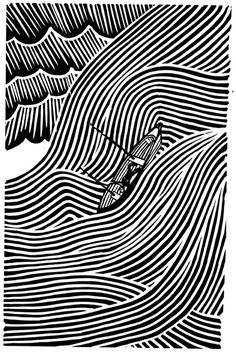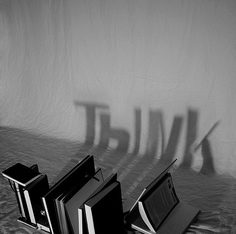 Elena Varvello is born in Turin in 1971.
Elena Varvello is born in Turin in 1971.
She is the author of two poetry collections, Perseveranz è salutare (Perseverence is healthy, Portofranco, 2002) and Atlanti (Canopo, 2004).
Her short stories and interventions are published in newspapers and magazines, including Il Maltese, Linus, D di Repubblica, Ventiquattro, Ilsole24ore, Nazione Indiana, Rassegna Sindacale among others.
She gives classes and seminars on Narration in the Scuola Holden’s Master in Turin, and in February 2011, she published with Fandango her first novel, La luce perfetta del giorno (The perfect light of day).
Elena VARVELLO (Italy)
A few months ago, I read an essay written by the great American short story writer Andre Dubus. Conceived as a letter (and titled Letter to a Writers’ Workshop, indeed), this essay is a beautiful and smart meditation about how to teach writing in the most appropriate way, and about what should be good for students and what should be damageable for them. At a certain point, Dubus writes: “Hemingway once said that he had very little natural talent and what people called his style was simply his effort to overcome his lack of talent. Don’t take that lightly. What is art if not a concentrated and impassioned effort to make something with the little we have, the little we see?”.
I will use these words, one day, I thought, they will help me somehow. Then, three days ago, while I was rethinking about this paper, turning over the pages of a magazine I found an interview with Philip Roth, in which he said, talking about Joe Luise, the boxer: “He said he has done the best he could do with what he had”, and then, suddenly, I returned to Andre Dubus’ essay.
Well, all these words I simply, deeply understand, in a very profound and maybe irrational way. I understand them first of all as a writer and then as a teacher, since I am both. I have been teaching in Scuola Holden, in Turin, since 1999. A long period of time, and this reminds me I have grown old in the meanwhile, but this is “a private affair”, as our writer Fenoglio would say. The point is that, from the beginning, in 1994, our school has worked specifically on storytelling: what it is, how you can teach someone to be a storyteller, not only and primarily a writer, what it means, what you have to do, practically. And how you can prepare someone to make something beautiful and significant with the little he has, the little he sees, as Dubus said (because we are only human, with human instruments)?
In my view, the most important thing is to understand that teaching and learning storytelling is a neverending process (as is writing). After more than 12 years spent with so many students, teaching is still something I am reflecting upon, and it changes as my vision of telling and writing stories changes, book after book, story after story. What I know for sure is that storytelling has deeply and profoundly to do with experience (what we have, what we see), and that everyone has his/her own particular experience, his/her own land, his/her own imaginary country. In fact, experience is one of our key words, and it is our starting point. Also, storytelling has to do with what we think about life and experience, because everyone has his/her own life but also his/her own point of view about it. Then, at last, storytelling has to do with the voice we use when we tell a story, and, again, everyone has his/her own voice, his/her own specific language and rhythm.
So, there are no general rules: this is the only rule I have discovered. No general rules in telling a story and no general rules in teaching how to do it. I have my own personal vision and method, and my colleagues have theirs, and this is a great richness, I think. But, at the same time, we are all involved in the same research, and we share the same, strong belief: storytelling is an old, primary gesture, a gesture that precedes writing; it is full of implications and meanings; it is partly mysterious and deeply related to experience and life.
In my opinion, this is the first thing that a student has to reflect upon, remembering that basically everyone is a storyteller. We are all storytellers. There is nothing more connected with being human than telling stories about ourselves and the world we live in and how we feel it and see it and respond to it and learn from it. But, then, what is teaching all these things about?
First of all, I believe that it has to do with the effort to free something inside of my students. This is the first step I usually take as a teacher.
“I don’t have any idea, I don’t know what to write”: well, I hear this sentence all the times, with every single student (some of them don’t say it directly, but you can read it on their faces). It is a paradox, because, as I have said, it is my strong belief that we are all storytellers, every day of our life, even if we do not notice it. So, the first thing I do as a teacher is trying to free my students from the heaviness of a platonic idea of what telling or writing a story should be, and lead them, if possible, to a sense of freedom.
 Don’t waste your time trying to catch an idea, but return to your experience, your own visions and obsessions: your world. Don’t think about an idea as an abstraction that will reach you from heaven and bless you if you are very, very lucky. In fact, the word Idea comes from the Greek verb idein, which means “to see”. We are in the right place: we are talking about our visions. So close your eyes and write what you see, because I know you see something. Write a page about a woman who is talking with her son, if this is what you see, or about a man who is driving his car in the evening, returning home from his work. Your mother, your father and their relationship. A dress you had when you were a girl or a boy. Something that wounded you. A child who has stolen money from his mother’s wallet to buy something he desperately wants. You, yourself.
Don’t waste your time trying to catch an idea, but return to your experience, your own visions and obsessions: your world. Don’t think about an idea as an abstraction that will reach you from heaven and bless you if you are very, very lucky. In fact, the word Idea comes from the Greek verb idein, which means “to see”. We are in the right place: we are talking about our visions. So close your eyes and write what you see, because I know you see something. Write a page about a woman who is talking with her son, if this is what you see, or about a man who is driving his car in the evening, returning home from his work. Your mother, your father and their relationship. A dress you had when you were a girl or a boy. Something that wounded you. A child who has stolen money from his mother’s wallet to buy something he desperately wants. You, yourself.
Elizabeth Strout once said: “Before I began to write my first novel, Amy and Isabelle, I had this vision on my mind: a mother who cuts her daughter’s hair angrily. I did not know where this vision would take me”. So, dig inside of you, I say to my students. In the past four years, for example, I’ve been obsessed by fires and corn fields and by the fear of losing someone I really love. I don’t know why, but however I wrote a novel in which all these obsessions are mixed together.
Memories and visions and obsessions: our own experience. Everything is already inside of you, I tell my students: this is the point. So, I encourage them to do this: work on their memories and visions and obsessions. Start from what you desire, what you fear, what you remember of your past, what you need, what you escape from. Write something about that, without thinking too much, not yet. You are not here to demonstrate you are a great talent: you are here to bring your own stories to light. So write about one thing you desire, for example. Describe your lover or one of your friends. Try to write a dialogue between you and your boyfriend, or a dialogue between two persons about an issue that is important for you. Reflect upon it and make it clear: what is really important, for you?
Usually, something good, funny or sad but full of life, comes out, and it feels like we are starting to reveal our deepest secrets to our best friend (which telling stories has to do with, symbolically, of course; Walter Benjamin called it the capacity of sharing experiences). I’m not talking about autobiography in a narrow sense. I’m rather talking about an exploration into the little we have and the little we see. What I want to say is that the old expression “write what you know”, also means write what you only suppose or fear or desire or imagine. All these things are parts of your experience. Write also what you partly ignore, as Wislawa Szymborska said talking about poets. She said: “Poets, if they are genuine, have to repeat themself again and again ‘I don’t know’”.
In another essay, Dubus wrote: “I learned by hearing myself speak; the source of my speaking is our mysterious harmony with truths we know, though very often our knowledge of them is hidden from us”. Replace the word speak with the word write: it works. There is a mysterious harmony with truths we know, though very often our knowledge of them is hidden from us.
Obviously, this is only the first step. A kind of deliverance from prejudices about what telling or writing a story should be (and I am talking about established rules and supposed commandments). It is like returning home. Or, to be more precise, it is like digging the foundations for a new house. But a house has to be build (a story has to be told) and it will take hard work and a long, long time.
And so we have the second thing, here: how to move from a personal vision, from our own experience, to a story (a short story or a novel, who knows?). At this point, we have to talk about connections and structures and shapes and editing. Editing (I mean the art of assembling and cutting and putting things together) is another of our key words, something we work on all the time.
Let’s return for a while to one of the supposed visions I have mentioned before (it is funny, because I don’t know exactly why I mentioned it): the boy who had stolen money from his mother’s wallet. From a certain point of view, this vision resembles an Edward Hopper’s picture, static but in movement at the same time. Who is this boy? Who is his mother? What does he desire so much, and why? What will he do after that?
Use your own visions, your experience and obsessions, and many questions will come out: then, connections will have to be made. Suddenly, the students understand that they have to imagine all these connections, bringing them to light, if they want to have a story. The visions ask for something more. So, after digging the foundations, they have to build the walls and the windows and the doors of their new house. The vision becomes larger and many-sided, connection after connection.
As a teacher, I try to help my students during this process, in which their world is so deeply involved. I ask them questions about their private visions, and then they usually start to see more than they would have thought. Are you sure?, I ask them. Do you really think that this can work? Do you really think his mother would react that way? What is the truth? What do you really need to say?
This is one of the strongest moments of every workshop: students touch with their hands the real meaning of words like resilience and determination, because building a house is not simple, nor fast. During this work of construction, a teacher is a guide and a goad. Make me see what you have seen, make it as clear as possible. Open your visions and articulate them, brick after brick, as if you were building a house. As Walter Benjamin said, the storyteller takes his material from his experience and turns it into everyone else’s experience.
When we reach this point, involved as we are in the issue of giving shape to our private and maybe sometimes confused visions, we have to talk about language and what should be the most appropriate way to structure a story that everyone could understand and see. In the end, we have to take other people, the readers, in our private country, and language is the only map we can offer them. In the short story Guy de Maupassant, Isaac Babel wrote: “There is no sword that can run through a heart much stronger than a period that has been put in the right place”.
This is the third and the last step. We work on language (words, sentences, paragraphs: the voice, the rhythm), since language is our way to translate private experiences into something sharable and open to everyone else. Students have to learn to take care of the words they use, they have to be precise and to assume the responsibility of their language. So, practically, they simply put their stories to the test, reading them aloud in our workshops and let the audience – the other students – react, as readers, somewhere, someday, will react to what they have written. Then, other questions come out. I always tell my students: “The point is not only if you like a story or not. Try to understand it: what do you feel about it? Does this story bring you something?”.
In the end, what I have learned in all these years as a teacher is that there is no other way than to start from every single student, leading him or her through the process of digging into themselves, helping them to become able to give shape to their experience through language. But, most of all, I have learned that there are no exercises or homework that will be more helpful than push them along this exploration of their private and imaginary world, starting from the little they have, the little they see, repeating them every time that this is and will always be their only real richness.
I mean that the point is not only to work on technical aspects, teaching students how they should write a perfect incipit or a perfect dialogue. Of course, I know these things are very important when you want to write something beautiful. I know it as a writer. But I know, also, that there is not only one way to write an incipit or a dialogue, and that, surely, the perfect way does not exist. It depends. The point is to reflect upon technical aspects letting all these issues come out from what they have seen and written.
Everyone has to find his/her own way through the mysterious land of telling stories. Everyone has to find his/her own voice, just listening carefully to him/herself and remembering the value of language. And everyone, as Szymborska rightly said, has to repeat “I don’t know”: this paradoxical certainty will push him/her further and further. During this trip, a teacher is a guide and a loyal company, someone who has asked himself or herself the same questions long time ago, but also someone who continues to search, because, thankfully, the research never ends. With every single story, we return to be who we really were from the beginning: storytellers.




